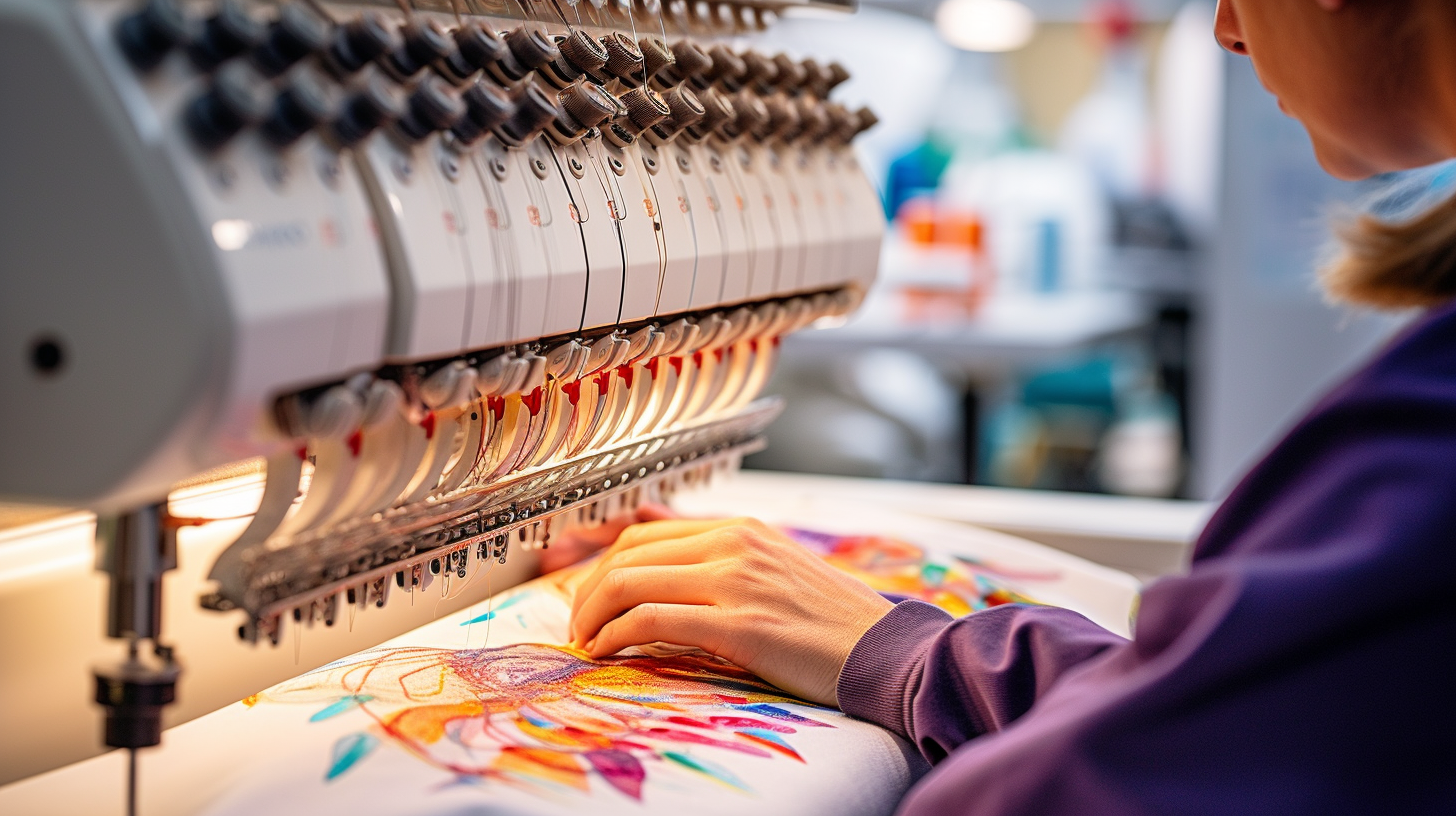Simplifying the Art of Embroidery Digitizing: Step-by-Step Guide
Embroidery digitizing is a meticulous craft that demands precision and creativity. As modern technology continues to development, the digitization procedure has actually become extra obtainable, permitting enthusiasts to bring their elaborate styles to life easily. In this guide, we will unwind the intricacies of embroidery digitizing, breaking down each step systematically to enhance the procedure and equip both newbies and experienced embroiderers alike. Remain tuned to discover just how you can simplify this elaborate art kind and change your innovative visions into wonderfully embroidered work of arts.
Understanding Needlework Digitizing Software
Needlework digitizing software application acts as an essential device for changing detailed styles into digital layouts suitable with embroidery makers, promoting specific sewing and customization. This specific software application allows individuals to import various photo documents layouts, such as JPG or PNG, and convert them into embroidery machine-readable styles like DST, EXP, or PES - Digitizing for Embroidery. By making use of attributes like stitch modifying, underlay options, and thread color selection, digitizing software application enables users to control every element of the style process
Furthermore, advanced needlework digitizing software program offers tools for developing complex styles, changing stitch density, and incorporating intricate details. Individuals can additionally preview the design prior to sewing it out, making certain precision and decreasing errors. Furthermore, many software application supply automated features that assist improve the digitizing procedure, conserving effort and time.
Understanding the capacities of needlework digitizing software program is essential for attaining top notch results in embroidery projects. By mastering this tool, needlework fanatics and professionals can unleash their creative thinking and bring elaborate layouts to life with accuracy and effectiveness.

Picking the Right Design Documents
After familiarizing yourself with the capacities of needlework digitizing software application, the following important action in the process is selecting the appropriate style file for your project. Digitizing for Embroidery. When selecting a design data for embroidery digitizing, it's necessary to consider the complexity of the layout, the dimension of the final product, and the sort of textile you will certainly be collaborating with
For elaborate layouts with fine information, a high-resolution picture or vector file is advised to guarantee that the embroidery machine can properly duplicate the design. In addition, the dimension of the end product plays a substantial function in picking the appropriate style file. Bigger styles might need higher resolution data to maintain quality and sharpness.
Additionally, the sort of fabric you will certainly be stitching on influences the option of layout file. Different textiles may need adjustments in the style documents to ensure that the stitches are appropriately straightened and the design looks like planned. By thoroughly choosing the appropriate design data based upon these variables, you can set yourself up for an effective needlework digitizing procedure.
Digitizing Tools and Methods
Making use of specialized software application and precision strategies, digitizing tools are crucial in transforming detailed layouts into embroidery-ready data. Embroidery digitizing software program, such as Wilcom, Hatch, or Embrilliance, offers the needed platform to transform artwork into stitch data. These programs supply functions like stitch editing, underlay choices, and text devices to make certain the design converts seamlessly onto material.
Among the crucial techniques in digitizing is developing a clear path for the embroidery maker to adhere to. This includes digitizing each component of the design with precision, determining stitch types, densities, and directions. By utilizing devices like digitizing tablets or software-specific plugins, embroiderers can achieve a high level of precision in their digitized her latest blog designs.
Moreover, understanding the art of rug sewing is important for creating high quality embroidery. Underlay stitching stabilizes the fabric and develops recommended you read a structure for the design, making sure that the final product is both aesthetically enticing and resilient. By comprehending these digitizing devices and techniques, embroiderers can raise their craft and bring detailed designs to life with precision and effectiveness.
Tailoring Stitch Kinds and Directions
Having actually established a structure in digitizing tools and techniques, a critical facet ahead of time needlework craftsmanship lies in tailoring stitch kinds and instructions with precision and purpose. The option of stitch types can significantly affect the total look and texture of the stitched design. Satin stitches, recognized for their smooth and glossy finish, work well for developing boundaries and message. On the other hand, fill stitches are suitable for covering bigger areas efficiently. By purposefully integrating these stitch types, embroiderers can attain depth and measurement in their layouts.
In addition, the instructions of stitches plays an important function in improving the visual appeal of the last needlework. By trying out with various stitch angles and patterns, embroiderers can bring their styles to life with impressive information and news ins and out.
Testing and Refining Your Digitized Layout
To make certain the precision and top quality of your digitized layout, complete testing and improvement are necessary action in the embroidery digitizing procedure. Once you have actually finished the digitization of your style, it is critical to evaluate it before continuing with the actual embroidery. Testing permits you to determine any possible problems such as string breaks, stitch thickness problems, or style distortions that might influence the result.

After testing, it is crucial to improve your digitized style based on the feedback from the test sew-out. This might involve tweaking sew setups, readjusting thickness, or making adjustments to the general style to accomplish the wanted end result. By iterating through testing and refinement, you can tweak your digitized layout to excellence prior to moving on with the real needlework process.
Verdict
To conclude, understanding the art of needlework digitizing needs a detailed understanding of the software program, choosing the best design file, using digitizing devices and techniques, tailoring stitch kinds and directions, and testing and fine-tuning the digitized layout. By adhering to these steps, embroiderers can simplify the digitizing procedure and create top quality stitched styles with precision and performance.
Comments on “Customized Digitizing for Embroidery: Tailored to Your Needs”